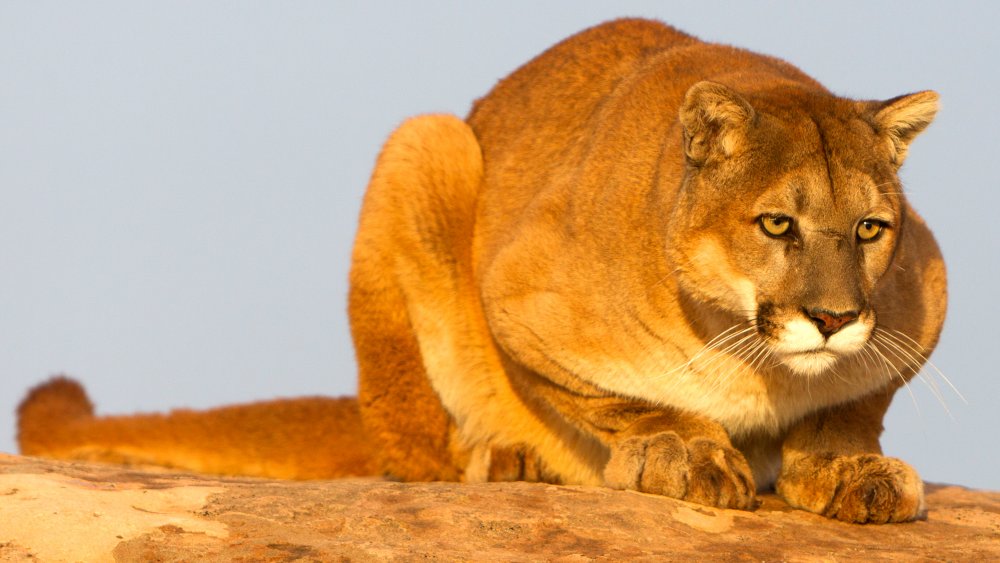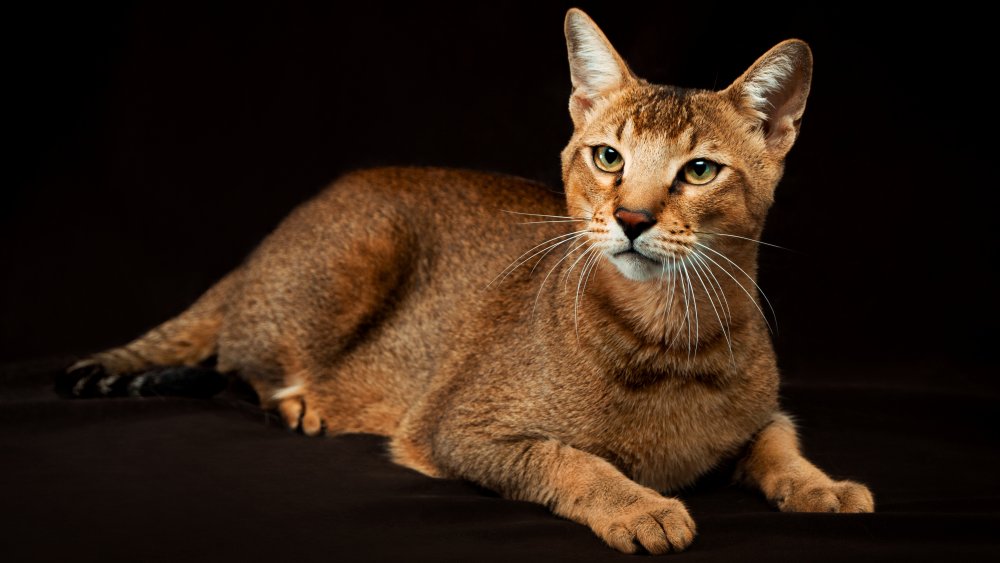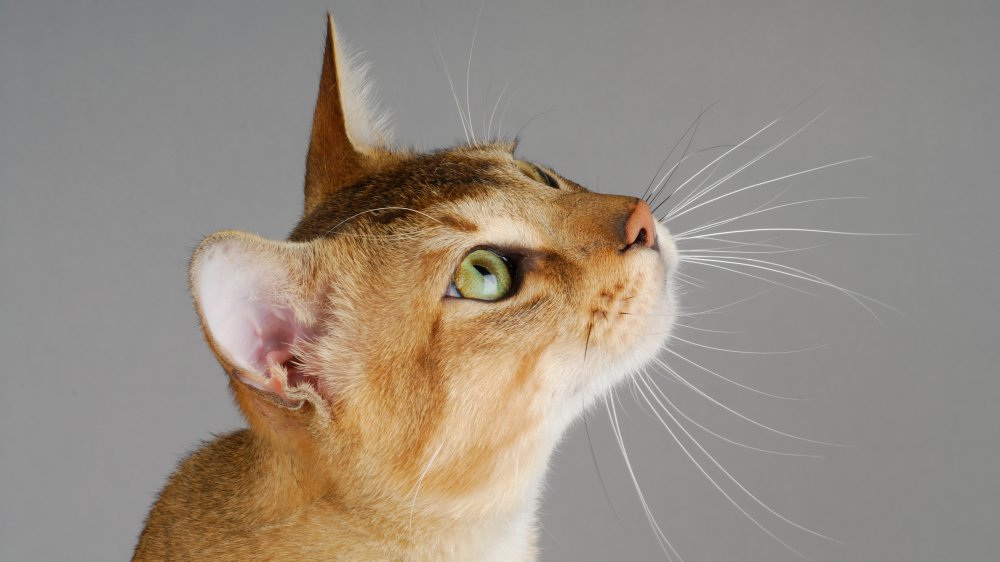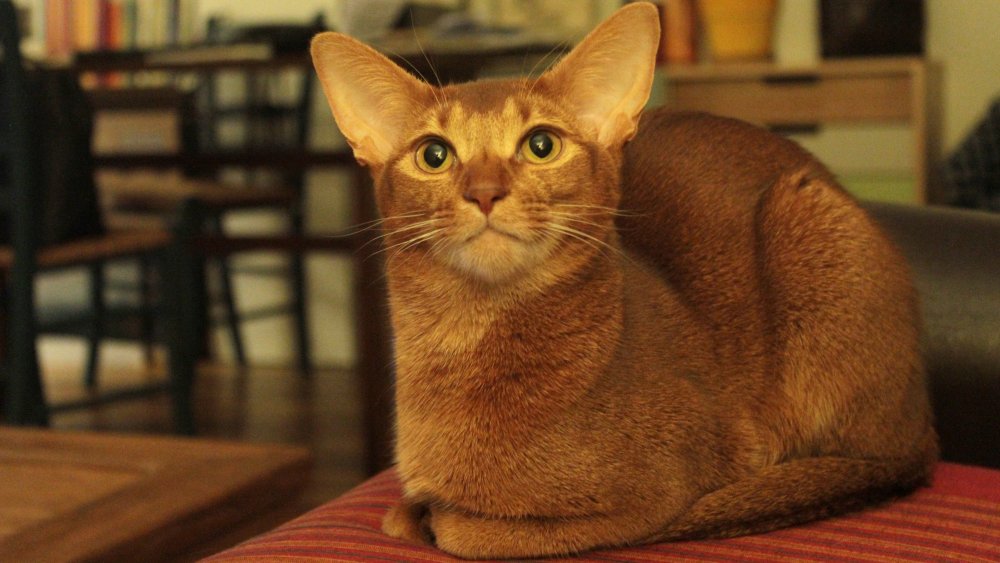The Cat Breed That Is Closest To A Lion
In 2013, geneticist Jong Bhak of South Korea's Genome Research Foundation told the BBC that a tiger is "just a big domestic cat." This may come as somewhat of a shock for those of you who've spent most of your lives not being adorably mauled to death by the cute, cuddly Shere Khan in your home or no surprise at all if you're the Oregon family that was trapped in their bedroom by a cat with an acute case of berserker rage. Cats share 95.6 percent of their DNA with tigers, but that doesn't mean every house cat has a Bengal tiger inside them. The genetic connection might be complicated by cat psychology.
Though Bahk proclaimed tigers to be gigantic house cats, IFLScience claims a house cat "is basically a tiny lion." That assertion is based on a 2014 study published in the Journal of Comparative Psychology. The Bronx Zoo collaborated with researchers at the University of Edinburgh to compare personality traits of domestic cats with those of the Scottish wildcat, snow leopard, clouded leopard, and African lion using "a 45-item personality survey." They measured feline neuroticism, agreeableness, and other characteristics typically attributed to humans, and results proclaimed that house cats mostly closely resemble lions. But would cats agree? And if so, which breed best resembles the king of the jungle?
The Chausie just can't wait to be king
A cat fit for a king of the jungle should have a fittingly feral name, and the Chausie fits that bill to a T. PetGuide.com writes that the breed's name comes from the Latin phrase "felis chaus," which literally translates to "jungle cat." That also reflects the cat's origins. A hybrid of the Abyssinian and the south central Asia's Jungle Cat, the Chausie was bred into existence during the 1990s. Strong, athletic, and energetic, this social animal can leap six to eight feet with ease and is an elite hunter.
The Chausie has been likened to a "small mountain lion" because of its appearance, per the Spruce Pets. So maybe IFLScience was right about that whole tiny lion thing. But while it might not be a big cat, it's definitely a big house cat — standing 14 to 18 inches tall and weighing up to 30 pounds. This little lion also enjoys having a human pride to pal around with and shouldn't be left alone for extended periods of time. So it's a great pet for couch potatoes who don't mind being spud-shamed by their much more active and physically gifted feline companion.
The way to a Chausie's lion heart is through its stomach
If looks could kill, a Chausie would kill you like a mountain lion because that's what it looks like. But while beauty is only skin deep, this pretty kitty's similarity to a lion isn't. The Chausie must eat meat. Full stop. Its intestines can't take plants, so feeding them of any kind of veggies can cause inflammation or malnutrition. That's a notable departure from many other cat breeds, which "can learn to consume veggie kibble if it has a familiar enough texture and consistency," according to University of Pennsylvania veterinarian nutritionist Kathryn Michel.
That meaty need makes the Chausie more akin to big cats, which are obligate carnivores. Philadelphia Zoo nutrition program director Barbara Toddes told Popular Science that feeding a veggie burger to a lion would be "like putting gasoline in a diesel engine." Not only are their fangs made to rend flesh; their digestive enzymes don't play well with plants.
Walk like an Egyptian cat
The Chausie might come closest to looking like the king of the jungle, but one of its ancestors might come closer to being a regal feline. Petful editor in chief Kristine Lacoste notes that the Abyssinian resembles "a small mountain lion." And unlike the Chausie, which has only existed since the late 20th century, per PetGuide.com, the Abyssinian didn't result from humans playing god with two distinct breeds of cat. On the contrary, the Abyssinian was once thought to have descended from a god that humans worshiped.
Britannica explains that the Abyssinian likely originated in ancient Egypt and is the breed that most closely resembles the sacred cats of the past. Per the Ancient History Encyclopedia, the goddess of cats was Bastet, which appropriately enough, was depicted as a woman with the head of a lioness. If the Abyssinian was the spiritual descendant of Bastet, then the argument could be made that it has the soul of a lion, if not the body. The other half of the Chausie hybrid, Jungle Cat, may have been domesticated in ancient Egypt, where the cats were also mummified. In that sense, the Abyssinian and Jungle Cat may have been a match made in cat heaven, making the Chausie a product of divine intervention.



